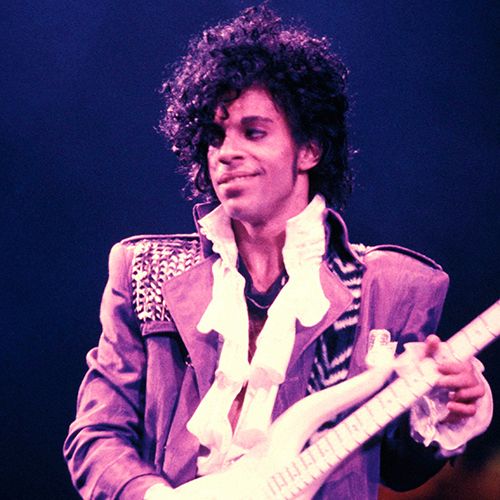What exactly happened on April 21, 2016, that shook the music world and left millions mourning? The legendary artist Prince, a global icon, was found dead at his Paisley Park estate, triggering an unprecedented wave of grief and remembrance.
The news of Prince's death, at the age of 57, sent shockwaves across the globe. He was discovered alone and unresponsive in an elevator at his Paisley Park home and recording studio located in Chanhassen, Minnesota. Emergency responders were unable to revive him, marking the end of an era for fans and the music industry. The loss was particularly poignant given his vibrant career, which spanned decades and encompassed a diverse range of musical styles. His death, which would later be attributed to an accidental fentanyl overdose, ignited a national outpouring of grief and tributes from fellow musicians, celebrities, and everyday fans.
| Category | Details |
|---|---|
| Full Name | Prince Rogers Nelson |
| Born | June 7, 1958, Minneapolis, Minnesota, USA |
| Died | April 21, 2016, Chanhassen, Minnesota, USA |
| Age at Death | 57 |
| Cause of Death | Accidental Fentanyl Overdose |
| Occupation | Singer, Songwriter, Musician, Actor, Producer |
| Musical Genres | Pop, R&B, Funk, Rock, New Wave |
| Instruments | Vocals, Guitar, Bass, Keyboards, Drums, Percussion, and many others |
| Years Active | 1970s 2016 |
| Record Sales | Over 100 Million Records Worldwide |
| Notable Awards | 7 Grammy Awards, Inducted into Rock and Roll Hall of Fame (2004), Academy Award (for Purple Rain score) |
| Known For | Flamboyant persona, wide vocal range, diverse musical styles, iconic performances, innovative use of technology |
| Associated acts | The Revolution, New Power Generation |
| Legacy | Influenced generations of musicians and artists. Known for his musical genius, stage presence, and control over his artistic output. |
| Reference Website | Prince Official Website |
The circumstances surrounding Prince's death were initially shrouded in a degree of uncertainty. While initial reports did not immediately pinpoint the cause, investigations quickly began. The midwest medical examiner's office in Anoka County later confirmed the musician died of an accidental overdose of fentanyl, a potent opioid painkiller. This revelation provided clarity but also highlighted the insidious nature of opioid addiction and its devastating effects.
The iconic musician behind hits like "Little Red Corvette," "Kiss," and "When Doves Cry," was born Prince Rogers Nelson on June 7, 1958, in Minneapolis, Minnesota. He sold over 100 million records, won seven Grammy Awards and was inducted into the Rock and Roll Hall of Fame in 2004. His career was marked by innovation, musical versatility, and a commitment to artistic independence. Prince's flamboyant persona, wide vocal range, and genre-bending music, which seamlessly blended pop, rock, funk, and R&B, captivated audiences worldwide. His influence extended beyond music, impacting fashion, performance, and artistic expression across multiple disciplines.
The discovery of Prince's body in the elevator at Paisley Park came as a profound shock. According to the Minneapolis Star Tribune, he was found by his drummer Kirk Johnson and his personal assistant Meron Berkure. Reports indicated that he may have been dead for up to six hours before being discovered, underscoring the tragic finality of the event. His estate, Paisley Park, became both a symbol of his creative genius and the site of his untimely demise. The estate was more than a home and studio; it was a sanctuary where he cultivated his musical vision and a haven for his unique artistic expression.
Following his death, Prince's body was not buried. His remains were cremated after an autopsy, and the ashes were placed inside a custom 3D-printed urn. This decision reflected his unconventional approach to life and art, a final act of individuality. The world mourned the loss of a musical innovator. The news prompted an outpouring of grief from fans, peers, and industry pundits who struggled to comprehend the absence of such a vibrant and influential figure. Social media was flooded with tributes, and memorial gatherings were held across the globe, demonstrating the depth of his impact on culture and the collective human experience.
Investigations revealed that Prince had been dealing with pain and seeking medical assistance in the days leading up to his death. On April 16, 2016, just five days before his passing, his team contacted a specialist in pain management and addiction to assist him. The specialist was due to meet with Prince shortly before his death, highlighting the musicians efforts to manage his physical pain. Despite these efforts, the tragic outcome underscores the challenge and complexity of addiction treatment.
Carver County Attorney Mark Metz later revealed details of the investigation, further illuminating the events surrounding Prince's passing. The focus shifted towards understanding the circumstances that led to the fatal overdose. While the investigation provided some answers, it also raised questions about the availability of powerful prescription painkillers and the ongoing struggle to combat the opioid crisis.
The world lost an iconic musician, Prince Rogers Nelson, on April 21, 2016. Emergency responders were unable to revive him, and he was pronounced dead at the age of 57. His legacy continues to endure through his music. His work is not only celebrated for its artistic value but also as a testament to his uncompromising dedication to artistic freedom and innovation. Prince's music continues to inspire and influence new generations of artists, solidifying his place as a timeless cultural icon.
In the aftermath of his death, paisley park was opened as a museum dedicated to the intensely private singer. In October 2016, Prince's ashes were on display, allowing fans a unique opportunity to pay their respects. The opening of Paisley Park as a museum ensures that his legacy will endure, providing a space for fans to celebrate his life and artistic achievements. This memorial, a celebration of his life, is a place for fans and admirers to delve deeper into the world he created.
The death of Prince prompted reflection on the prevalence of fentanyl and the opioid crisis, which continues to plague many communities. The incident, while tragic, serves as a reminder of the importance of addressing the underlying causes of addiction and offering support to those struggling with substance abuse. His untimely passing brought the opioid crisis into sharper focus, prompting conversations about prevention, treatment, and public health strategies to prevent similar tragedies.
The music icon died at the age of 57. He was known for his flamboyant persona, wide vocal range, and diverse musical styles, and sold more than 100 million records worldwide. The artist, once known as the artist formerly known as prince, remains a symbol of musical innovation and artistic freedom.


